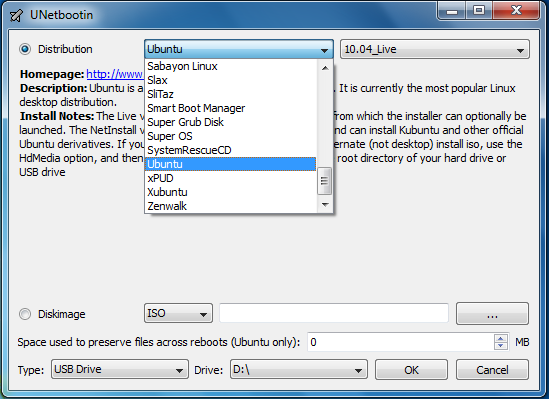

Since they don't need to access your hard drive partition, it remains unmounted, and hence you are free to repartition your hard drive (using the installer or GParted) while they are running. Again, this issue only arises if you're installing to hard disk from a frugal install, and not if you're installing to hard disk from a Live USB.įirst, let's distinguish between two separate types of distributions:ĭistributions loaded entirely into RAM: These distributions load everything into RAM and run directly from there. The particular details of this task depends on the boot mechanism used by your distribution (as you are unable to repartition your drive while it's mounted).
#Unetbootin fedora install
If you want to make a full, standard install and can't use a Live USB drive as your installer, you can still use a frugal install as the installer (with some extra work needed for partitioning). Making a full, standard hard disk install if you can't use a Live USB For details about the boot process, see How UNetbootin Works. This is often referred to as a "frugal install", as it doesn't install a dedicated bootloader and doesn't make a separate partition, but rather piggybacks off the existing OS's bootloader and installs the files for the live environment inside the existing partition. Rather, you are simply booting into the live environment, the same way as if you had booted from a live CD or a live USB, except it's being loaded from your hard disk instead.
#Unetbootin fedora iso
If you provide a LiveCD iso file, such as the Ubuntu desktop iso, to UNetbootin and use the hard disk install mode, the resulting install will NOT be a full, standard hard drive installation. Again, this complex procedure isn't necessary if you're installing from a Live USB to a hard disk, or from a Live USB to another USB drive, only from a Live USB to the same USB drive. However, should you wish to make a full, standard (not Live USB) install onto your USB drive rather than onto your hard disk, there's an additional restriction that the drive you wish to launch the installer from should not be the same as the drive you wish to install to, so either use 2 USB drives, or use a single USB drive and follow the procedure described in "Making a full, standard hard disk install from a frugal install" to repartition it. Should you wish to make a full, standard install to your hard disk (an install with its own dedicated bootloader and partition), just boot the created Live USB and follow the same procedure that is used if you're installing from a CD. While the target drive in this install mode isn't reformatted, the syslinux bootloader is installed to the drive's MBR, hence you should not use it to install to any partition on a hard drive you expect to boot from (in other words, don't force USB Drive install mode to install to C: or Windows won't boot anymore). It can also be used on other FAT32-formatted media, such as Secure Digital (SD) cards. This install mode uses the supplied iso file to create a bootable Live USB drive, which should behave as though you had burned the iso to a CD.


 0 kommentar(er)
0 kommentar(er)
